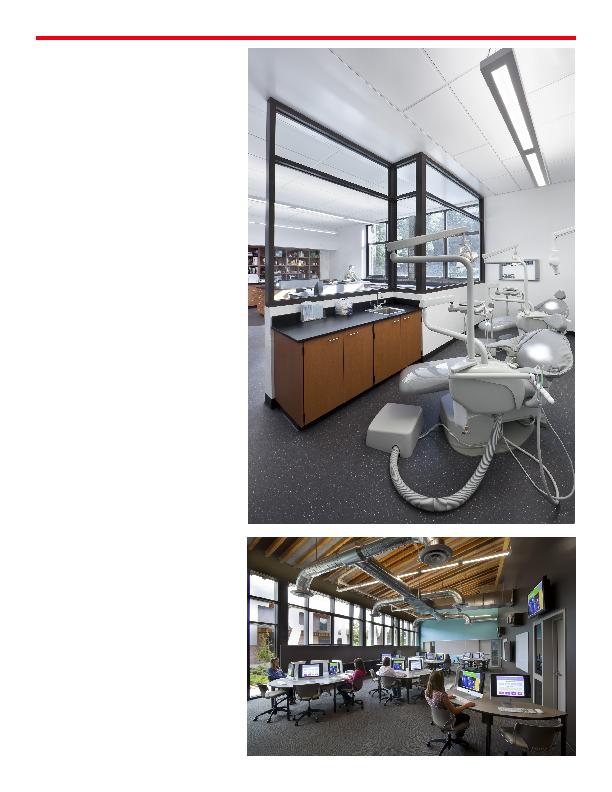
Students are faced with real-world
challenges, projects and issues that
encourage an interactive level of attention.
learning and internships that enable
students to form initial relationships
and key knowledge with the outside
community. Like at South Tahoe High
School, these curriculums affect how
school facilities are designed. The same
way students expect instant access to
answers on the Internet, they in turn
deserve instant access to teachers, each
other and to flexible spaces they can
manipulate to their own needs.
in collaborative and interactive
environments. This generation is pushing
a change in how LPA designs schools.
Now, how can our schools push for a
change in educational planning? Back
to the assembly line, in order to create
successful students? The one-size-fits-all
mentality with educational delivery doesn't
fly. Is it time for a custom order?
South Tahoe High School is modeled after
a commercial auto dealership. Bottom left,
natural daylight and exposed wood ceilings
give a light and airy feel to the construction
classroom. Top right, a mock dental clinic
gives students hands-on learning. Bottom
right, the Tahoe Art and Design Academy
(TADA), demonstrates the best Career Tech
Education has to offer.